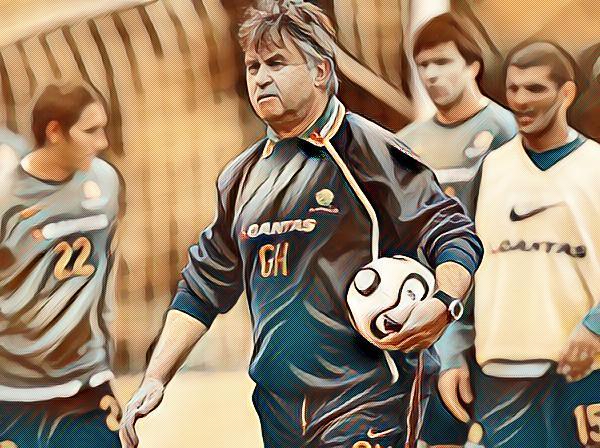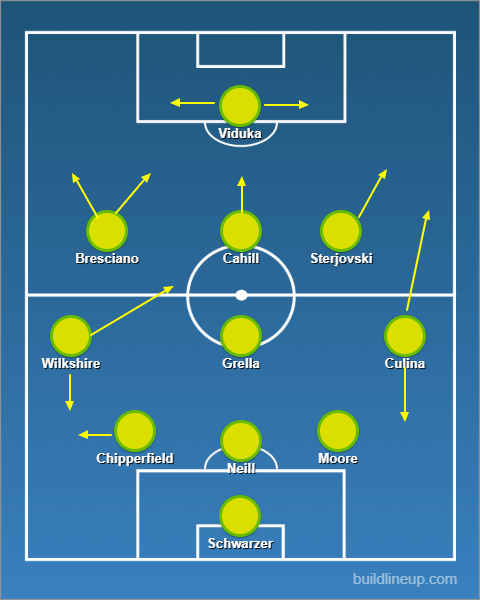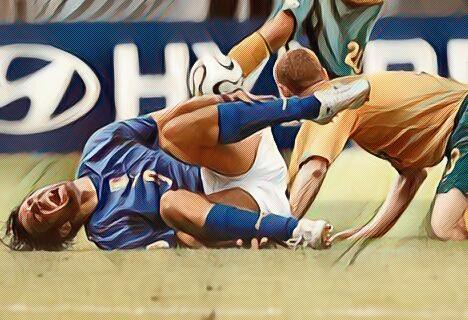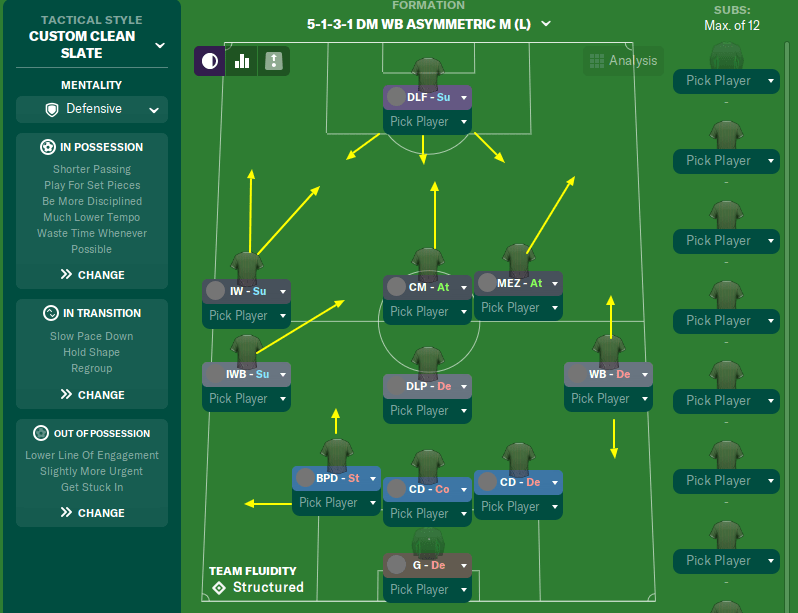
Red Star Alliance: Shithousing the Shithousers (Socceroo Style Survival Tactics)
After two seasons playing variations on the Allardyce 4-5-1 (4-3-3) system, I decided it was time for a change. Considering we had grossly overachieved with Red Star Wrexham and gotten into the Championship ahead of schedule, I am faced with the daunting prospect of avoiding relegation. Given that we’ve already mastered the dark arts of defensive, pragmatic, resultism football, where else could we go? How does a team of shithousers get even shithousier?
After a few days of reflection, the answer came to me. I needed to deal with the most painful footballing memory I have…
The Dark Day of 2006
As an Australian football fan, there aren’t too many bright spots in our history. Sure we’ve won Asia Cups and beaten up on Island Nations who gave a game to anyone who owned a pair of boots (true story….we won 33-0), there isn’t much to be proud of. Qualifying for the 2006 World Cup was a huge moment since we hadn’t gotten there since 1974 and had to endure heartbreaking playoff losses to the likes of Iran (who were incredibly shit) and Uruguay over the years. After the failures of El Tel and Frank “Pisshead” Farina, the FFA finally found a man to bring it all together: Guus Hiddink. As pragmatic as they come, he preached a conservative, possession style of football that lulled the opposition to sleep while we snuck up and pulled their pants down (or “dacked” them as we Aussies would say). It sounds ideal for Red Star Wrexham!

After Australia squeaked through in the playoffs against Uruguay via John Aloisi’s glorious penalty, we were finally at the big dance. Drawn in Group F with Brazil, Croatia and Japan, Hiddink faced another uphill climb and devised a defensive system that football folklore has dubbed the 3-6-1. We essentially shithoused our way through the group stages via a cheeky win against Japan and a draw to Croatia. Brazil laughed at us as Ronaldo ate a donut on the pitch and walzed through us 2-0. As a shithousing second-place qualifier we faced the test of Italy in the Round of 16 and here’s how the Socceroos lined up on that fateful day:

Commonly known as the 3-6-1, it was a fairly fluid system that could morph into other shapes depending on who played in the midfield “six”. It could look like a 3-3-3-1 or a 3-5-2 as per the first half of the Japan game where Harry Kewell played in behind Viduka. The system really came to life in the second half of the first game against Japan, when Cahill came off the bench and into central midfield. The whole point was to clog midfield like a post-curry night toilet, frustrate our opponents by keeping possession, and deny opposition passing lanes with either nine or ten men behind the ball.
While the style of play was extremely conservative, the choices in personnel were not. Hiddink looked at the talent he had available and saw he had a couple of decent central defenders (Moore and Neill), one world-class striker (Viduka) and a boatload of technical, athletic midfielders (Bresciano, Grella, Kewell, Cahill, Culina, Emerton, Wilkshire) that he would deploy everywhere he could. Against Italy, he had Wilkshire, a right-footed midfielder as an inverted wingback on the left. Brett Emerton, a burly winger played as a Central Defender against Croatia. Utter madness or genius….you decide!

As the Aussies wanted to keep the ball at all costs they mostly avoided lumping the ball up to Viduka. They tried to play through Grella who had plenty of options forward or sideways with the midfield packed with players. Central defenders were given license to play out as well.
Without the ball, the team defended deep and with numbers behind the ball. They pressed inside their own half and rarely played on the counter, choosing to recycle possession backwards most of the time when they won the ball back. It’s not sexy football, but it played to their limited strengths.
In Practice
This could have been so perfect. We dominated Lippi’s side with 58% possession and Materazzi (who else) got himself sent off in the 50th minute. We stood toe-to-toe with the masters of the dark arts and shithoused the shithousers….until that fatal moment when Lucas Neill had a total brain fart and went to ground. Fabio Grosso dived over him like he’d been shot and enter Totti to take the penalty and it was all over.
In hindsight, Hiddink should have been more aggressive once the Italians were down to ten men. He waited with the hope of getting them into extra time and this was his error. The Italians smelled fear and with little time left they took the one opportunity they had and got a near-perfect shithousing victory.

The FM Interpretation
When it comes to tactic building based on real-world systems, my approach is really simple: I either watch several matches and build a “consensus” tactic or watch just one match in excruciating detail. I’ve taken the latter approach for this system and based my tactic solely on the Socceroos match with Italy:

DLF-S: The Viduka role. There is an argument to suggest he should be a Target Man but Viduka’s first touch, technical quality and ability to bring others into play led me to go for a DLF role.

IW-S: Bresciano had a free role and moved into the left half-space but also across the field at times. PI: Roam From Position.
IWB-S: Luke Wilkshire usually played his club football as a right midfielder, right back or in central midfield. When in possession in this game, he tucked into midfield alongside Grella to form a double pivot. This was arguably the most interesting tactical move from Hiddink.
MEZ-A: Sterjovksi usually played as a striker or right winger but started narrower against Italy as an inside-out midfielder.
CM-A: Cahill played centrally making forward runs to support Viduka and pressing the Italian midfielders out of possession. There’s an argument for this role to be a BBM or AM-S, but I like the CM-A runs from a deeper starting position.
DLP-D: Vinny Grella, a cultured and tactically astute defensive midfielder. Had a great career in Serie A before injuries and age ended his career in Australia. The DLP-D fits this nicely as a catalyst for recycling possession and the discipline of its positioning.
BPD-St: Chipperfield was the most aggressive of the three central defenders bringing the ball out and covering the space left by Wilkshire when he moved forward. PI: Stay wider, Dribble More
CD-Co: Lucas Neill played in the centre of the defence and sat deepest sweeping up possession, but not so much as to merit a Libero role.
CD-D: Craig Moore played on the right of the three and was a decent defender with good technical skills. There’s an argument here for the BPD role but I’m playing a defender with good technical skills here who will pick out some nice long passes anyway.
GK-D: Schwarzer was a fantastic shot-stopping goalkeeper.
Shithouse Team Instructions: Shorter Passing, Play for Set Pieces, Be More Disciplined, Much Lower Tempo, Waste Time, Slow Pace Down, Hold Shape, Regroup, Lower Line of Engagement, Slightly More Urgent, Get Stuck In.
Personnel
In terms of recruitment, I’ve also tried to recreate the awkward nature of the approach by using players with a similar profile to those in the Australian squad for the match. To this extent, I bought a right-footed utility player (Marcus McGuane) for the inverted wingback role on the left flank to recreate Wilkshire’s role. The same goes for Jack Robinson recreating Chipperfield’s role as a marauding left-back playing on the left side of the trio of centre backs. Sterjovski usually played as a wide-ish striker or winger in a front two or three in his club career, so Eddie Brown was already in our squad and is a logical choice for re-training in Mile’s Mezzala role.
Early results have shown the system works but I’ll try and post more detailed results and analysis soon.
Until then, always ask yourself…WWBSD?
6 thoughts on “Red Star Alliance: Shithousing the Shithousers (Socceroo Style Survival Tactics)”
Brilliant read and setup, Simon.
As a fellow Aus football fan this ‘breakthrough’ from Hiddink was a joy (for lack of better word) to watch.
Good analysis and replication.
Look forward to seeing how it plays.
Interesting article.
Really interested to see how this works, especially off the back of three teams playing a similar 6-3-1 role against Liverpool which resulted in three lost games in a row (now THATS a tactic I would love to see replicated).
Can’t wait to see the update and see how these tactics are working!
Results have been mixed. We’re currently sitting just outside the relegation spots but slowly improving. Considering we were favourites for relegation and have the lowest wage budget in the league by a mile (most teams outspend us by 3 or 4 times), we’re doing ok with it. Mistakes kill you with this type of approach and the squad doesn’t really have the required technical ability to pull it off. We’re having the lion’s share of possession but against pressing teams (most of our opponents), it’s usually a case of when we are punished for mistakes rather than if. It’s been a nice break from my usual “hoofball” approach, but this possession malarky isn’t really my type of football 🙂
Yup, same. Especially English (and from the North East at that) it’s refreshing to se FM content that’s dedicated to the intricacies of unfashionable football.
Really love the content; arguably some of the best FM content on the web right now.
is there a way I can download this tactic